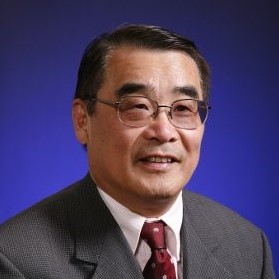Six months ago, the world’s attention turned to Hangzhou, China, as leaders representing the Group of 20 largest economies met that September 4-5, at what would be then U.S. President Barack Obama’s final appearance at a G20 summit. The Hangzhou meeting was also the first ever G20 summit hosted by China.
How long ago and far away that seems as a new U.S. president has moved quickly to dismantle Obama initiatives and executive orders, and transform campaign promises into reality.
For followers of the U.S.-China relationship, the focus now turns from Hangzhou to Mar-a-Lago, the landmark Palm Beach, Florida estate and club that is the site of the first summit meeting between U.S. President Donald J. Trump and China President Xi Jinping.
At the G20 Hangzhou Summit, Obama sought to solidify his foreign policy for the Asia-Pacific region. A seeming breakthrough had come when he and the Chinese president signed on to the Paris Climate Agreement – a diplomatic milestone for the world’s two heaviest polluters.
Obama also sought to increase international and domestic support for the Trans Pacific Partnership trade agreement despite repudiation by former U.S. Secretary of State Hillary Clinton in her presidential campaign, discuss international law and maritime security in the South China Sea, and seek action on terrorist activity, violence and humanitarian crises across the Middle East.
Those days are past, but the evolution of Hangzhou and other Chinese cities deserves continued attention.
Not as well known to many as Beijing, Shanghai or even Guangzhou, the once small city of Hangzhou has been transformed into a metropolis of 7 million people and is also the heart of China’s Silicon Valley. Home to e-commerce giant Alibaba, Hangzhou continues to lure tech start-ups and to serve as home base for entrepreneurs, including those who made their initial wealth through Alibaba as it grew.
Like many other Chinese cities, Hangzhou’s growth was fueled early on in part by manufacturing, development and construction. These also are key drivers of China’s continuing pollution challenge. The consequences of that growth were at least temporarily addressed in the lead-up to the 2016 Hangzhou G-20 Summit.
Roads were renovated and buildings given facelifts. Thousands of trees were planted. Residents were given the week off to reduce the number of cars on the road. Factories were closed, and migrant workers were sent home – all efforts to reduce air pollution and bring “G20 blue skies.”
Artificial fixes and face-lifts aside, Hangzhou has performed well vis-à-vis other Chinese cities economically. In 2015, the Milken Institute – a non-partisan economic think tank where I serve as the inaugural Asia Fellow – ranked China’s large, middle-sized, and small cities based on economic performance in its inaugural Best Performing Cities China report. Key inputs in the economics ranking included job and wage growth, foreign direct investment (FDI) growth, and a measure of high value-added industry employment, among others.
In 2015, Hangzhou ranked 25th among China’s first and second-tiered cities. In 2016, the city moved up to 20th in the 2016 report, behind best performing city Guiyang in the Guizhou province. Hangzhou significantly improved its categorical ranking on 1-year job growth (30th to 10th), but did worse in 5-year overall job growth (11th to 16th).
As China’s leaders work to shift the nation from labor-intensive low-cost manufacturing goods toward innovation-based products and high-quality technology manufacturing and services-driven growth, Hangzhou may well serve as a test case of what can and cannot be achieved long after artificial G20 Summit-driven investments and changes fade.
Internally, China is increasing funding for technology-intensive industries including aviation, robotics, and biomedical technology. The government also continues to shift low-cost manufacturing inland and redevelop coastal cities as hubs for more innovation-based industries. Regional growth clusters are envisioned, including a “Jing-Jin-Ji” Megalopolis region, which would integrate Beijing, Tianjin, and the Hebei area into one super city, and a Yangtze River Economic Belt that would encompass the giant metropolitan areas of Shanghai, Chongqing and Chengdu.
Externally, China is seeking to improve economic access, integration, capital and knowledge flows, and information sharing to other economic regions. The most notable effort are China’s “One Belt, One Road” initiatives that seek to foster a new Silk Road on land and at sea to better connect China to new and established markets.
The impact on the economic performance of China’s cities and economic regions – and on everyday Chinese citizens’ lives – of such ambitious internal and external initiatives is unclear. Future results will provide further input on how government and city leaders can best transform and leverage cities for economic growth. This may well include the need for implementation of policies that increase access to capital and knowledge, and free up the power of the private sector, as with Alibaba in Hangzhou, to drive future growth.
In July of this year, the world’s attention will move on to Hamburg as Germany serves as host of the 12th meeting of the leaders of the Group of 20. There, as in Hangzhou last year, there will be much discussion and talk. What will then follow is the reality check of whether actions result and whether beneficial policies are implemented and enforced.
Much attention is understandably given to multilateral meetings and bilateral summits, as in the Xi-Trump Summit at Mar-a-Lago. Even more important in our increasingly urbanized world will be to continue to look at and learn from what is happening on the ground in cities and surrounding areas even after the summiteers have left.


